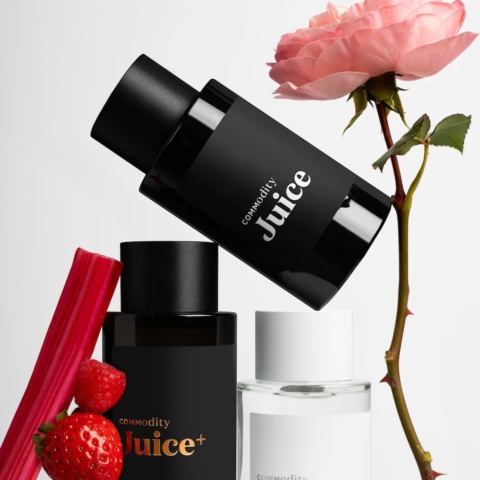Garden of Simples
By Jo Phillips
The Earth has been a supreme provider to every civilisation, society or individual who ever lived on this planet. As a mother, she has always given us an abundance of resources and facilities from sunshine to rain animals to plants, which has helped us not only lead a happy, enriched healthy life but has also via her plant life, enabled us to heal our illnesses and injuries. The use of plants and natural resources has been a common practice in many societies around the world. Hence, natural entities in any form be it trees, plants, rivers or mountains are symbols of reverence in many cultures. To know more about the history and science behind the uses of plants for medicinal and therapeutic purposes continue here at Garden of Simples.
With extensive progress in science and technology, in today’s time, we are heavily dependent on manufactured medicines and tablets. But have you ever imagined how our ancestors approached the science of healing in the days before this industrial boom?
Even before we had written languages, people used herbs to treat illnesses. To treat a wide range of diseases, ancient civilizations concocted remedies out of every element of a plant or a tree like seeds, herbs, leaves, fruit, and bark. ‘Ayurveda’ written around 800BC is a book of high reverence which hails from India. It provides directives on traditional medicine systems which also extensively elaborates on the uses of plants and trees for healing purposes. Another example where the use of plants for medical and therapeutic purposes is strongly highlighted is in the ancient Traditional Chinese medicine practices.
A scroll through ancient Egypt’s history, which has been dated to around 1,500 BC, listed various medications that source their ingredients naturally from trees and plants. The Ebers Papyrus, a medical journal from the Egyptian civilisation that deals with herbal therapies suggests juniper for chest aches, mint and sandalwood to boost healthy digestion and consumption of heated herbs to combat asthma. Some of its prescriptions still hold valid today, even while others are debatable by contemporary standards. For instance, it promotes the use of honey, which is recognised for its natural antibacterial properties, and aloe vera, which is still administered for burns and ulcers.
The use of plants for medicinal purposes was also a common practice in ancient Europe. The famous Greek physician and botanist -Dioscorides, who wrote Materia Medica in 65 AD, enlighten extensively on use of plants for medicinal purposes and the importance of herbal remedies. Even in ancient Rome herbs like rosemary and thyme, lavender, rose, mint, sage and fennel were widely cultivated for medicinal and culinary purposes.
One interesting concept that reflects the strong relationship between humans and plants for therapeutic purposes is the ‘garden of simples’ that is believed to come from the middle-ages. Also known as a ‘monastic garden‘ or ‘herb garden‘ – the ‘garden of simples‘ is a specialised garden commonly established in monasteries that have been formed around the middle ages, to cultivate and nurture aromatic plants specially equipped for medicinal and therapeutic purposes.
Taking this beautiful symbol that signifies the deep interrelation between the human society and plants – the ‘garden of simples’ one step ahead, Roos & Roos Paris, a world renowned perfume brand has launched its new collection called The Simples Collection with an aim to revive the flourishing memory of this traditional past.
With an exciting range of three new perfumes, The Simples Collection by Roos & Roos Paris aims to rejuvenate our lives with the fragrances native to the garden of simples. The collection has strongly been influenced by these medicinal gardens, especially in the choices of its ingredients and condiments.
The perfumes are a fine blend of 100% vegan ingredients and are specially designed keeping environmental consciousness in mind. These 100ml eco-designed bottles are made from lightweight glass and fully compostable wooden caps with an aim to carb landfill waste.
The perfumes are a fine creation inspired by the herby-aromatic plants to create an olfactory score. They reflect the artistic expression of the leaves rustling in the breeze, to leave a note that conveys the message of the scent.
Here’s a list of 3 exciting perfumes under The Simples Collection by Roos & Roos:
BEL ABSINTHE
With a scent combining anise and tarragon, absinthe is a precious addition to the garden with its silvery foliage.

Top: Absinthe, Chamomile
Heart: Sandalwood, White Musk
Base: Patchouli
MALAMATA
The “unloved” nettle is notorious for its stinging properties. His hair elicits a response to his sole touch unless a leaf is cleverly grabbed from below.

Top: Peppermint, Violet Leaves
Heart: Rose, Lily of the Valley
Base: Patchouli, Musk
GLOBULUS
Among the various types of eucalyptus there is one with the amusing name is globulus. If the plant helps you breathe with a delicious mint-like scent, its wood is used for the pulp.

Top: Eucalyptus Globulus
Heart: Cardamom, Mint
Base: Crystal Moss
The Simples Collection is truly shaped by the blooming memory of the traditional therapeutic glories. An idyllic paradise of Roos & Roos perfumes, indeed is a tribute to a forgotten and exquisite healing practices of the past.
To know more about Roos & Roos’s The Simples Collection visit Here. and Here for the UK
If you enjoyed reading Garden of Simples why not try reading Creative Together
Magazine London, Be Inspired; Get Involved





